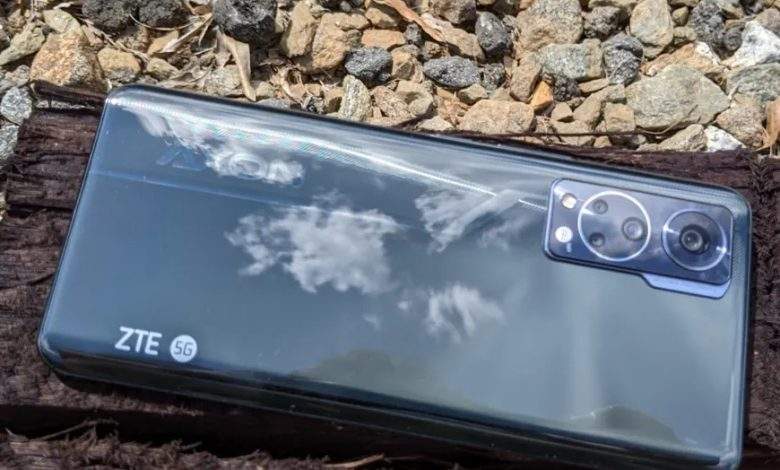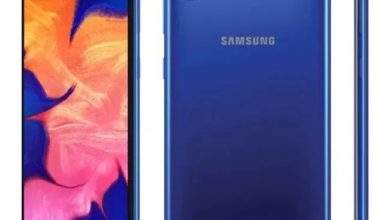
ZTE Axon 30 5G Review: A Fast Phone with Some Major Speedbumps
ZTE is a more modest telephone maker, all in all, however, it has shown itself to be a commendable rival in the bigger cell phone market. Furthermore, once again at it again with a mid-range Android telephone in the Axon 30—contending in a similar section as telephones like the Pixel 5a.
Fast looks can be misleading, and the Axon 30 is unquestionably attempting to draw you in with some superior equipment outwardly. ZTE’s telephones will in general utilize an extremely smooth, present-day style for the outside and that is the same here. Nonetheless, saying this doesn’t imply that the specs don’t show some guarantee also. Utilizing the Snapdragon 870 processor with one or the other 8 or 12 GB of RAM (our audit unit is the 8GB model), the Axon 30 ought to have the option to flaunt some noteworthy presentation at the cost tag of $499.00. With a 5G association too, this could end up being a stunning spending option in contrast to more costly leads, yet that will boil down to the particulars.
Notwithstanding, this isn’t the first occasion when I’ve said a great deal of this. The ZTE Axon 20, this present telephone’s archetype, likewise had serious specs on paper yet ended up baffling me with a stammering 90 Hz mode and a fair camera. It’s anything but a terrible telephone, however, there was not a good excuse to get it over more settled telephones that could offer more at a similar cost. Thus, how about we check whether the 30 figures out how to get a move on and advanced a genuinely convincing proposition this time.
Specs
Processor: Qualcomm Snapdragon 870 5G
Smash: Either 8 or 12GB model (8GB model investigated)
Capacity: 128GB with 8GB model, 256GB with 12GB model + MicroSD card space on both
Show: 6.92 inches 1080 x 2460 120 Hz AMOLED
Cameras: 64MP wide, 8MP ultrawide, 5MP large scale, 2MP profundity; 16MP selfie cam (under show)
Ports and charging: USB-C
Battery: 4220mAh with 65W quick charging; No remote charging
Finger impression Sensor: In-show
IP Rating: N/A
Shadings: Black or turquoise
Measurements: 170.2 x 77.8 x 7.8 mm; 189g
Cost: $499.00 (8GB RAM + 128GB capacity, as looked into), $599.00 (12GB RAM + 256GB capacity)
Hardware: Good Enough at Mimicking Better
Since you know what’s in the engine, we should discuss the outside. The Axon 30 provisions a smooth glass and plastic edge for certain minor examples scratched into it. In spite of it looking exceptionally superior, it feels neither modest nor costly when held—it’s an extremely odd plasticky feel I’m totally nonpartisan on. I have the dark model (there’s likewise a turquoise rendition) and all in all, I’d say it looks pretty standard yet present-day no different either way.
In general, the Axon 30 can without much of a stretch mix in with other famous Android telephones—regardless of whether that is something worth being thankful for or something terrible I’ll surrender to you. It’s additionally worth focusing on the rear of the telephone as an outright monster for fingerprints, however, basically, ZTE had the foreknowledge to remember a straightforward case for the crate.
The telephone utilizes a 6.92-inch, AMOLED show (which runs at 120 Hz) and it looks brilliant. Normally, as an AMOLED screen, colors look more precise on the Axon 30 instead of LED shows. In any case, the genuine champ here is the manner by which strong the screen—isn’t anything is intruding on it on account of the under-show selfie cam.
Rather than a poke hole plan or top bezel for the selfie cam, ZTE shrouded it under the presentation here—an element the Axon 20 spearheaded. The impact isn’t awesome, you can see the camera in case you’re searching for it, yet notwithstanding, it’s still adequate you’ll neglect it’s there following a couple of moments of utilizing the telephone. Something else incorporated into the screen is the unique finger impression sensor, and keeping in mind that it’s more touchy than I’d like, it’s as yet serviceable and shouldn’t give you much difficulty.
ZTE has a decent history of making its telephones look great and the Axon 30 is the same. This shell could without much of a stretch have a place with a telephone double the cost, however that is supportive of nothing if the presentation can’t back it up.
Performance and ZTE’s Software: Smooth and Safe
The Axon 30 runs MyOS 11, which I would group as a softly altered adaptation of Android 11. Before we go any further, ZTE’s not approaching with regards to future update plans, so it’s not affirmed if the telephone will get a variant of Android 12 at the hour of composing. ZTE has made minor clues that it’s fostering a rendition of Android 12, so I believe it’s protected to expect the Axon 30 will get it, however, I can’t promise it until ZTE does.
With regards to the actual OS, MyOS sneaks in two or three cool elements and a lot of visual changes, however, it still generally plays things safe. This is a stock Android with a restorative skin that spotlights brilliant tones and bent edges. It gives things a remarkable visual language contrasted with other Android fabricates, however on the off chance that you lean toward a more unpretentious UI I could likewise see this being irritating. Essentially every slider and button in the menus has a splendid neon look to it, which will be an affection it or disdain it kind of thing (by and by, I like it a ton).
There are some minor new provisions remembered for MyOS 11, however, none of them will shake your reality. For instance, one of the more significant increases is the “Z POP” motion, which opens a little fast access menu with easy routes for the home screen, lock screen, and taking a screen capture. This can be helpful, simply nothing insane. Toward the day’s end, in the event that you like Android, you’ll like what ZTE’s doing here, and you’ll likewise get reacquainted with everything rapidly. Assuming you’re anticipating some insane new components, MyOS doesn’t convey anything in such a manner.
On the exceptionally brilliant side, there is almost no bloatware stacked onto the telephone out of the crate other than ZTE’s very own couple applications, (for example, a voice recording and document perusing application).
In any case, that is sufficient with regards to what MyOS looks like, how can it feel? All things considered, I previously referenced ZTE pressed in a 120 Hz show on the Axon 30, and fortunately, the 120 Hz mode runs extremely smooth here. Clearly, in the event that you truly push the telephone as far as possible, you’ll have a few stammers, yet in regular use, I had the option to reliably utilize 120 Hz mode without issue. Booting up the telephone and opening applications was likewise smart more often than not, however, there was a periodic hiccup.
Fundamentally, the Snapdragon 870 is truly doing its fair share here. It’s difficult to make this telephone clasp in case you’re not effectively attempting to, and surprisingly in gaming, it made an admirable showing. I’m not an immense portable gamer brain you, but rather what I attempted worked magnificently, in any event, for more serious titles like Fortnite.
Indeed, even the battery held up quite well—I’m a genuinely light telephone client so accept this as you will, however, I had the option to serenely get a day and a portion of utilization out of the 30. I figure you can depend on this enduring an entire outing of the house absent a lot of issues except if you’re utilizing it continually. In any case, all things considered, the Axon 30’s super quick 55W wired charging makes a low battery something simple to manage. Shockingly, there’s no remote charging, so you’ll need to manage without that.
Cameras: A Lot of Promises That Don’t Meet the Mark
Similar to the remainder of the telephone, from the outset, the 30’s camera looks very great. It has four back focal points (64MP wide, 8MP ultrawide, 5MP full scale, and a 2MP profundity), and huge loads of modes to play inside the actual application. The entirety of this guarantees an adaptable camera that can catch quality photographs, yet as we’re going to see, the Axon 30 infrequently experiences its own camera exhibit.
The wide focal point functions admirably enough for scene shots—it oversaturates colors a ton (particularly green), yet in case there are more impartial tones present it generally adjusts. The computerized zoom is quite awful, as you can find in the photograph with the squirrel, however for snapping speedy pics this is certainly a functional camera. You can have some great chances with it in particularly on bright days and even with indoor lighting, things are fair.



